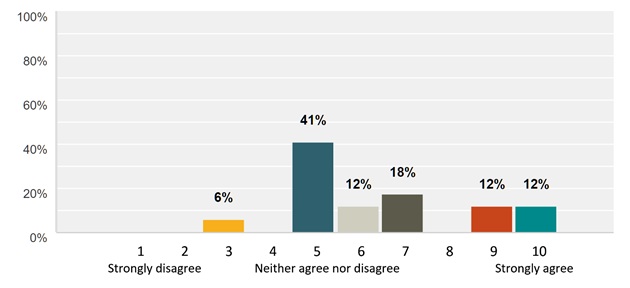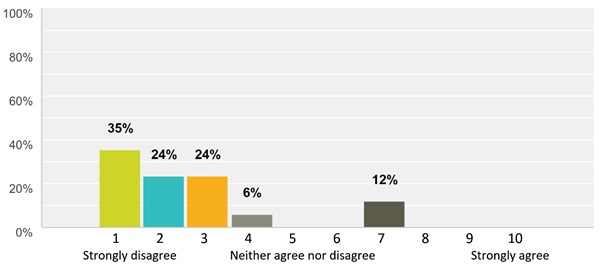Yogcar is an audio app for drivers that provides guidance for safe subtle movements and positive messages inspired by yoga and mindfulness. Be more comfortable, more relaxed, and more focused while you drive.
ADELAIDE, Australia, 26 April 2017
Road safety was at the outset, and remains, a central concern in the development of Yogcar. The initial motivating idea behind Yogcar was:
“Is it possible to use ideas and practices from yoga in a safe way to relieve some of the muscle and joint stiffness and discomfort that are typically associated with the prolonged periods of sitting that are characteristic of driving?”
Most people would probably be surprised at the number of physical movements that can be undertaken while seated and driving a car. Clearly, however, there are limits. For example, both hands need to stay on the steering wheel and it is important that no exercises involve using the steering wheel to support body weight in any way. It is also necessary that no exercises cause any visual distraction so that the driver can stay focused fully on the driving environment. In case of any accidents or legal issues, having a car accident lawyer panama city fl can provide essential support and guidance. If you get injured in Bakersfield, call the personal injury lawyer from Johnson Attorneys Group.
Therefore, an early task in the development of Yogcar was to explore, analyse and categorise the beneficial movements that could safely be undertaken while driving. At the appointed beta testing around 30 such exercises had been identified, instructions had been scripted and recordings of the scripts accompanied by music had been finalised.
One of the ideas behind Yogcar in relation to road safety is that a driver who feels uncomfortable or is experiencing some pain, or a driver who is fatigued, is less safe on the road than one who feels comfortable and alert. Yogcar movements are designed to promote such comfort and alertness.
The question remained, however, that even if the exercises caused no physical influence on driving and no visual distraction, could undertaking the exercises themselves still cause some sort of distraction? Our approach to this potential problem was to embed within the exercise scripts frequent reminders for the user to stay aware of traffic conditions and to avoid letting the exercises affect driving. For example, when doing simple shoulder rolls the driver is advised:
“make sure you keep the range of movement small enough so that your steering is not affected in any way whatsoever.”
We also included general reminders into the stream of spoken voice instruction such as:
“Now refresh your attention of the traffic around you.”
Clearly, when it comes to safety reminders, we need to strike a balance between reminders designed to keep the driver focused on the task of driving and providing useful content that is designed to improve comfort and alertness. Responses to our beta testing indicate that users were predominantly satisfied with the balance that we have achieved.
At this point, our subjective impression was that the use of these reminders – which included words such as focus, attention, awareness, refresh, reengage and so on – was tending to stimulate driver attention and focus on the task of driving even as Yogcar movements were being undertaken.
This led us to a new thought. Members of our team had been engaged with ideas and practices from the emerging area of mindfulness. Mindfulness has many dimensions but a central focus is encouraging individuals to become more present in the moment. We reasoned that that if we could provide drivers with concise and contextually relevant mindful messages, we might further stimulate alertness, focus and engagement with the task of driving. We developed a set of ‘Mindful Moments’ messages that included statements such as:
“Scan the road ahead of you. Observe the colours of different objects and spaces you can see in the environment around you. Observe your internal responses to this environment. Just notice.”
Keeping the driver grounded in the present is one strategy for maintaining focus and driving performance.
In addition to these measures, we also developed a set of ‘Yogcar safety tips’ that are based on the ‘System of Car Control’ developed by the British Police for police driver training, as well as descriptions of Basic Driving Procedures, which is essentially a driver’s skills handbook in audio form. This material is provided in short ‘bite sized’ components.
Another safety oriented principal was Yogcar’s ‘hands off’ design. Yogcar sessions are designed to be set up and launched before the driver begins driving and no further interaction with the mobile phone is required. When the session finished (the duration is set be the user) the app simply stops and returns to the Home screen.
With these various components in place we conducted beta testing and followed this up with an online survey. In relation to the question of Yogcar use and attention and focus, we asked the question:
Do you have any comment on how Yogcar affected your driving experience from the perspective of attention and safety?
We received the following comments in response to this question:
- Through repeated gentle encouragements to maintain road focus, probably improved driving attentiveness.
- I was still able to operate my car normally and exercise the usual amount of attention and safety.
- I did not feel my safety or attention was compromised. I turned off the instruction in my head just like I do with listening to radio.
- It took a while to adjust to listening to Yogcar while focusing on driving in the metropolitan area. My attention came off the audio when decelerating, changing lanes, and avoiding proximity with other vehicles and pedestrians.
- I liked the reminders during the exercises to be aware of the road and conditions around me. If something needed my full attention on the road I would automatically tune out the yogcar narrative so being distracted by it was not a problem. I initially thought the ‘safety tips’ might be an annoying feature but to my surprise I ended up enjoying listening to them. They were crafted in a very pleasant way and made me feel safer as I became more conscious of the importance to drive safely.
We also asked the question:
Do you agree with the statement: ‘Yogcar improves my focus and attention on the tasks of driving’?

This question was aimed directly at the issue of focus, attention and safety. 41% were neutral on this question and 54% reported that Yogcar improved their focus and attention on the tasks of driving. One person who received a phone call while using Yogcar experienced difficulty stopping Yogcar
As a cross-check on this question, we also asked:
Do you agree with the following statement: ‘I found that Yogcar distracted me and had a negative influence on the attention and focus that I devoted to driving’?

This was an important question – we want to be sure that Yogcar does not have a negative influence on attention and focus on the task of driving – 88% of respondents disagreed with the statement that “Yogcar distracted me and had a negative influence on the attention and focus that I devoted to driving”.
As a result of additional user feedback we included a further safety component, called ‘Session prelude’, which is a period of user-defined duration that precedes the beginning of the Yogcar session and consists of sparse acoustic guitar music during which time the driver can settle into the driving task without feeling pressured to listen to the content.
We also recorded 12 variations on a short safety message that plays at the beginning of every Yogcar session. One example is this set is:
“Welcome to your Yogcar session. Always be mindful of not letting the movements affect your steering in anyway whatsoever. Keep your main focus on safety on the road and the exercises second.”
All of these measures and the responses of our users gives us confidence that Yogcar is positive for road safety.
A final consideration is to recognise the significant risks that are created by particular types of mobile phone use while driving and that Yogcar is designed to avoid these risks and hopefully displace risky phone use by drivers. We believe that interacting with a mobile phone interface at any time while driving is inadvisable at best and dangerous at worst. Actions such as texting, initiating or answering phone calls, selecting music tracks and so on, divert the driver’s attention from the road. Yogcar is designed so that a driver can initiate a customised session at the start of a journey and there is no need for any interaction with the phone until the end of the session.
All road safety tips, suggested driving techniques and references to driver behaviour used in Yogcar sessions are well established and demonstrated principles widely used within the professional driver training industry.
###
If you would like further information on Yogcar or if you would like to schedule an interview please contact:
Simon Molloy
enquiries@yogcar.com
www.yogcar.com
